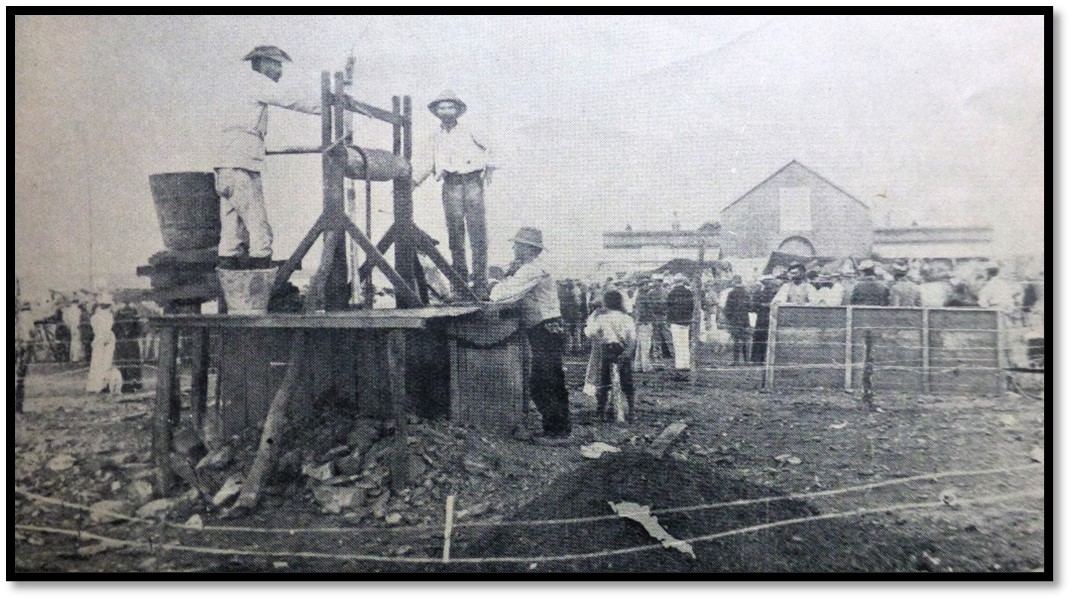Rebellion days in Bulawayo: When the Matabele rose in 1896
This short article, chiefly useful for the photographs, appeared in the publication of the Occupation of Matabeleland: A Souvenir that celebrated the fortieth anniversary of the occupation of Matabeleland in 1933. There are much more detailed articles on this website including:
Under Bulawayo
- Bulawayo and the Matabele Rebellion (or Umvukela) – Part 1, the first few weeks and the patrols sent to rescue outlying farmers, prospectors and storekeepers
- Bulawayo and the Matabele Rebellion (or Umvukela) – Part 2, after the first few weeks, a change in tactics
- 1896-7 Rebellion Memorials
- Field Marshall Herbert Charles Onslow Plumer, 1st Viscount Plumer, GCB, GCMG, GCVO, GBE and his connection with Matabeleland
- Baden-Powell in Matabeleland during 1896 where he learned the principles of Scouting
Under Matabeleland South
- David Tyrie Laing and the near-disaster Matobo Hills engagement in the 1896 Matabele Uprising or Umvukela
- Battle of Tshingengoma or Sikombo’s stronghold
- Filabusi Memorial and the Edkins Store killings
- Fort Umlugulu (previously Fort Nsezi, or Sugar-bush Camp) and the Cemetery
- Hubert John Antony Hervey (1859 – 1896)
- The Matabele uprising or First Umvukela Indaba Site (Rhodes Indaba site)

The Hotchkiss gun at the north-eastern corner of the laager in Market Square. Tattersall’s Hotel in the background
The amaNdebele rose in March 1896. Laagers were formed at Bulawayo, Gwelo (Gweru) and Belingwe (Mberengwa) For a time the position was desperate and some heavy fighting took place between the amaNdebele and the patrols which went out to protect settlers in isolated parts of the country. Colonel Plumer had charge of the Matabeleland Relief Force (MRF) and other names which appear in the story of the rebellion include R. Baden-Powell, Sir R. Martin, Sir F. Carrington, Colonel Beal, Colonels W Napier, J. Spreckley and the Hon. Maurice Gifford, Captain Macfarlane, George Grey, F.C. Selous, Captain Brand, Captain van Niekerk, Burnham, J.P. Richardson, Captain Jesser Coope, Captain Laing, Captain Nicholson, Captain Hoel Llewellyn.

The Grey’s Scouts at their HQ at the Bulawayo Club. Grey is fourth from the left in the back row
The men of 1896 fought with great gallantry in most difficult circumstances and Southern Rhodesia must ever remember them with pride and gratitude. For indabas with the amaNdebele were necessary before peace was arranged. Rhodes and a party at great personal risk since all were unarmed rode into the hills to confer with the Chiefs. An armistice was arranged. The second indaba took place on 28 August, the third which lasted about six weeks opened on 9 September and the fourth and last on the 13 October, when peace was formally ratified. Before the end of the month the rebels in the Matopos (Matobo) had surrendered 2,842 guns and 13,820 assegais. Colonel Plumer’s Column was disbanded on the 22 October 1896.

The Bulawayo well during the Rebellion; later a windmill was added

The Bulawayo ammunition depot
References
Occupation of Matabeleland: A Souvenir. November 1933
